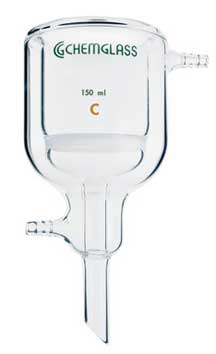| The Home page of ILPI's Safety Data Sheet (SDS) Resource, the leader in SDS information since 1995! | |
| The history and philosophy behind this resource. | |
| A curated collection of books and reference materials concerning Safety Data Sheets and closely related topics. | |
| Paste your plain text SDS into the SDS-Demystifier, and it will be converted into a hypertext-enriched document with links to detailed explanations of each key term. | |
| An extensive list of frequently asked questions about Safety Data Sheets including regulations, content, compliance, and more. | |
| A humorous take on Safety Data Sheet jargon. Fill in the blanks on our entry form to generate a personalized Unsafety Data Sheet to share with your coworkers. | |
| Since 1995, we've maintained this massive curated list of the best places to find Safety Data Sheets on the Internet. | |
| You are here! Way more than a glossary, this hypertext-enhanced resource covers hundreds of SDS-related terms and expert knowledge. Each entry includes both the SDS relevance and links to additional authoritative resources. | |
| Archived results of Safety Data Sheet related polls taken by some of our millions of site visitors | |
| The OSHA regulations behind SDS regulations, including the inspection guidelines and over 400 official interpretations letters under the Hazard Communication Standard | |
| Commercial suppliers of SDS authoring and management software as well as cloud compliance services. | |
| Commercial companies that will create SDS's for your specific needs as well as SDS translation companies. |

Safety signs, banners, and scoreboards? Get yours at Safety Emporium!
Definition
A carboxylic acid contains a carboxy (carboxyl) group, COOH, which has one oxygen atom doubly bonded to the carbon atom and a hydroxy (OH) group singly bonded to the carbon atom. The carbon atom of the carboxy group must also be attached to an organic group or a hydrogen. Examples of common carboxylic acids include:

Carboxylic acids that have long (12 to 24 carbon atom) unbranched aliphatic groups are called fatty acids.
Additional Info

Need to filter something? We have all kinds of filtration apparatus like this one from Safety Emporium.
The hydrogen atom of the carboxyl group can dissociate (detach as H+) only to a very small extent, behavior that classifies carboxylic acids as weak acids. For example, we can say that the following equilibrium lies very far to the left side of the reaction (i.e. very little acetate anion forms in solution):

The names of carboxylic acids should end in "oic acid" according to official IUPAC nomenclature rules (see link below), however older common names that end in "ic acid" are still used. The "oic acid" naming scheme is superior because it unambiguously identifies the material as a carboxylic acid. In cases where another functional group takes naming precedence, "carboxy" is used as a prefix, although in certain cases the suffix "carboxylic acid" may also be used!

When a carboxylic acid is neutralized with a base it becomes a salt that is itself a weak base. The salt is named using the suffix "oate" instead of "oic acid". Sodium benzoate, shown below, is a common food preservative:

Carboxylic acids occur naturally in many organisms, and are primary components of your DNA. Examples of carboxylic acids you routinely encounter include ascorbic acid (vitamin C), acetic acid (vinegar is a 5% aqueous solution of vinegar), and citric acid (responsible for the sourness/tartness of citrus fruits).
SDS Relevance
Carboxylic acids are generally weak acids, but that does not mean that they can not be corrosive or pose other hazards. Section 8 (exposure controls/personal protection) of the Safety Data Sheet will discuss proper personal protective equipment (PPE) such as goggles and gloves to use when working with carboxylic acids. Take care to avoid storage or use with incompatible chemicals such as bases; such information will be found in Section 10 (stability and reactivity). Avoid storing carboxylic acids in metal cabinets, which can corrode. Carboxylic acids may also be flammable or combustible.
Acetic acid is a combustible organic chemical which should be stored in a flammable storage cabinet, NOT a corrosive storage cabinet. Acetic acid is incompatible with minerals acids such as nitric acid and hydrochloric acid so it should not be stored with them in a corrosive storage cabinet. To reduce the chance of corrosion, use a tray or secondary container for the carboxylic acids stored in your flammable solvent cabinet.

Ensure a safe workplace with safety signs and labels from Safety Emporium!
Further Reading
- William Reusch has a great discussion of carboxylic acids.
- IUPAC nomenclature rules for the naming of carboxylic acids.
- Carboxylic Acids and Esters at Angelo State University. Availabe thanks to the Internet Archive.
- Carboxylic Acids Esters, Amines and Amides at De Anza College.
- 15: Organic Acids and Bases and Some of Their Derivatives at ChemLibre Texts has a number of subchapters on carboxylic acids and their derivatives.
- Carboxylic Acids at the U of Calgary covers overview, preparation, reactions, spectroscopy and also has some practice problems.
- Introducing Carboxylic Acids at Jim Clark's Chemguide.